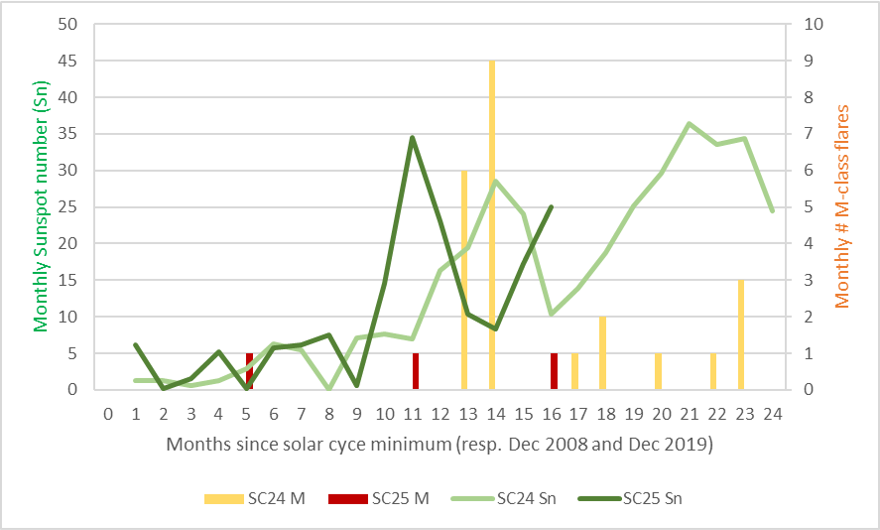NOAA 2816 was an all-in-all relatively simple sunspot group when, on 19 April 2021, it produced an M1 flare. The source of the flare was located in the trailing portion of the sunspot group, where there was some mixing of magnetic polarities. Some coronal dimming and a weak coronal wave were observed in extreme ultraviolet imagery, telltale signs that a coronal mass ejection (CME) was associated with this event. Coronagraphic imagery revealed indeed the presence of a CME, but it had no earth-directed component.

Following the M-class flares of 29 May and 29 November last year, this is only the 3rd event of such a class so far this solar cycle (SC25). In comparison with the previous solar cycle (SC24), SC25 had a spurt in the sunspot number (Sn , SILSO) in November last year, but that resulted in only 1 M-class flare (see the graph underneath). In SC24, we had a significant increase in the sunspot number during the January-February 2010 timeframe (months 13-14 in the graph), accompanied by no less than 15 M-class flares. For SC25, one can expect a gradual increase in sunspot number and M-class flares as 2021 further develops. If SC25 is anything similar to the previous solar cycle, then X-class flares can be expected from 2022 onwards, but it can occur sooner following the unanticipated emergence of a flare-active sunspot group. One very active group: that's all it takes!
Note: The SC25 flare data have not been rescaled. See the NOAA bulletin for more information at https://www.swpc.noaa.gov/news/goes-14-15-are-now-storage-mode






